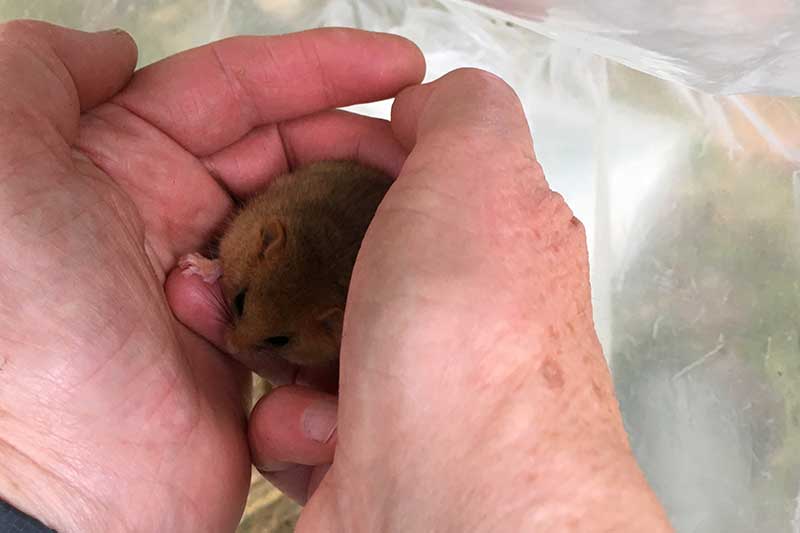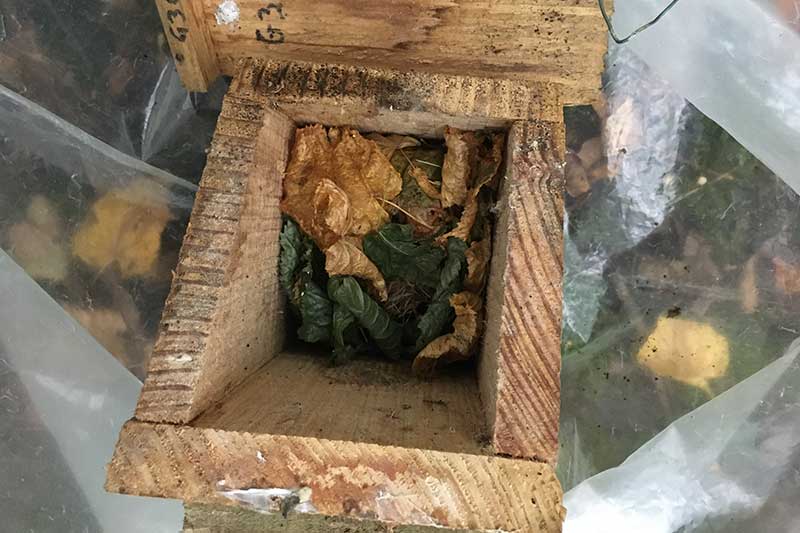Gemma Watkinson, a member of the Lincolnshire Dormouse Group, reports on how their hazel dormice have not been observing lockdown.
Dormice find their way into a new woodland
This year, even though we were only able to carry out our nest box surveys during August, September and October, the results have been really exciting! We’re celebrating the dispersal of dormice out of the Chambers Farm Wood complex.
Hazel dormice were first reintroduced to Chambers Farm, Lincolnshire, in 2002; now they’ve moved even further, into the wider landscape. Our first confirmed record of dormice outside Chambers Farm Woods came in October, when Amanda and Dave Mylett found two nest boxes containing dormouse nests and a 27g female dormouse in Goslings Corner Wood.
This woodland is a Lincolnshire Wildlife Trust reserve, just 1km from Chambers Farm and connected by hedgerows, which we’ve been monitoring since 2017. We’re delighted that the dormice have found their way along the hedgerows and into a new area of woodland.

One of the hazel dormice found by Dave and Amanda Mylett in Goslings Corner Wood.
Newcomers are surviving winter
And that wasn’t the only good news for 2020. Last year, 11 captive-bred dormice were released into Ivy Wood, to the south of the original 2002 release site. The aim was to increase the genetic variability of the existing population. None of the micro-chipped dormice released last summer were found in the August or September box checks.
However, two micro-chipped animals (one male and one female) were found together in a nest box in the 2019 release area, when a licenced surveyor who lives in the woods looked in the boxes in June. It’s great to know that some of the newcomers survived the winter hibernation and we hope they’ve gone on to have a litter this summer.

One of the nests found by Dave and Amanda Mylett in Goslings Corner Wood.
Recording good numbers
We also found good numbers of dormice in all the other areas of Chambers Farm Woods that are monitored. As usual, the highest number of dormice were recorded in Ivy Wood, and litters of young were found here during this year’s checks.
We also found plenty of dormice in Minting Wood, which is at least 2km from the original reintroduction site. And juveniles were also found in Minting this year. Another wood we have nest boxes up in, is called Little Scrubbs Wood. Hazel dormice were found in Little Scrubbs in 2012, but since then there’s been very little activity, with only one dormouse recorded during 2019. This year however, we had dormice nests in five boxes and four animals were recorded during the October check. Three of these were adults (18-24g) and clearly not adhering to social distancing guidelines: they were all in one box!
Written by Gemma Watkinson
Find out how we’re working to protect the hazel dormouse and what you can do to help:
